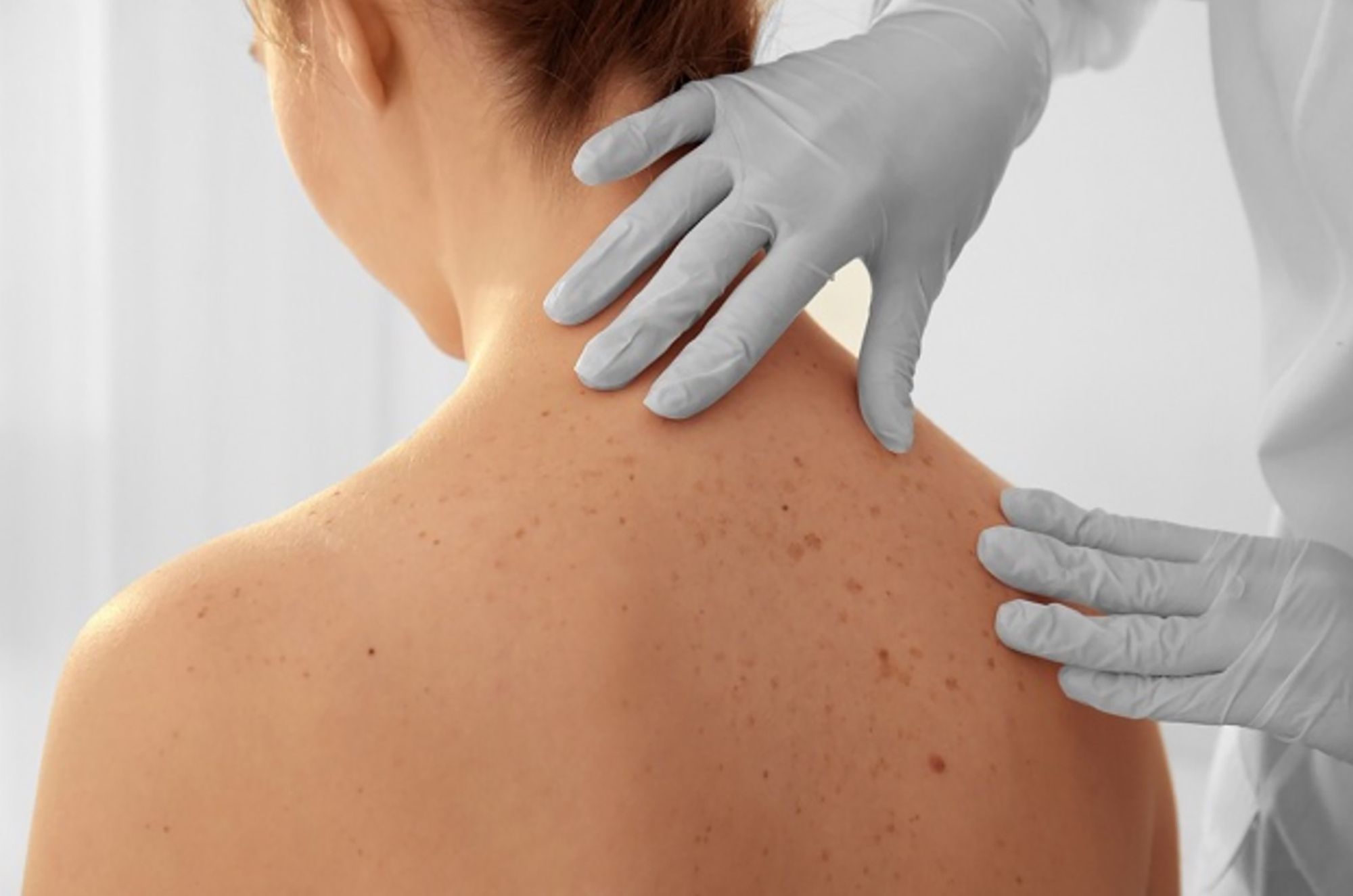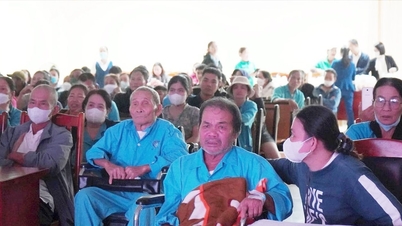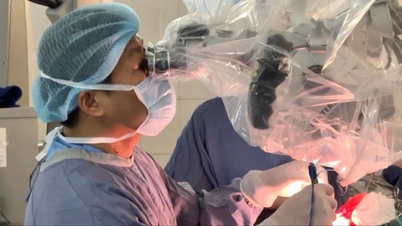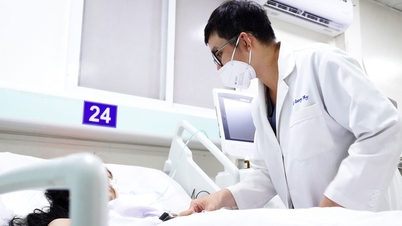Increase in the number of patients
Ms. LTH (42 years old, from Bac Giang ) visited the Central Dermatology Hospital for examination because the wound from a mole removal on her face was constantly oozing fluid and itching, saying: “I’ve had a mole on my cheek for a long time, but in recent years, it grew rapidly and became rough, looking very unsightly. I decided to have it removed at a spa near my house. However, after the removal, the wound wouldn’t heal.”

According to doctors, when unusual moles or dark spots appear on the body, it is necessary to go to a medical facility for timely examination (illustrative image).
The dermoscopy results showed that Ms. H had melanoma, a highly aggressive type of cancer. However, the treating doctor said that Ms. H was fortunate because the cancer was in an early stage, only localized and not yet metastasized, so the chances of successful treatment were good.
Meanwhile, Mr. PVL (65 years old, from Hung Yen ) was brought by his family to have a black, rough spot near his heel examined. According to Mr. T, the black spot had appeared many years ago without causing any discomfort. However, recently the black spot had spread into a patchy area.
Based on the results of scans and tests, Mr. L was diagnosed with melanoma in the sole of his right foot and required extensive surgery to remove all cancerous cells and minimize recurrence.
Professor Nguyen Huu Sau, Deputy Director of the Central Dermatology Hospital, said that in the two years 2023-2024, the number of skin cancer patients recorded a significant increase. Each week, the hospital receives approximately 10-20 patients for examination and treatment. Overall, the hospital receives about 300-500 skin cancer patients annually.
There are two types of skin cancer: non-melanoma (basal cell carcinoma and squamous cell carcinoma) and melanoma, the most aggressive type, which has a high rate of metastasis.
While five years ago the disease was rare with only about 25 cases per year, recently the hospital has been recording 1-2 cases per week.
Easily misdiagnosed.
According to Dr. Nguyen Huu Quang, Deputy Head of the Department of Plastic and Reconstructive Surgery at the Central Dermatology Hospital, skin cancer affects both sexes, particularly those working in sunlight. It primarily develops on sun-exposed areas, including the scalp, face, lips, ears, neck, chest, arms, hands, and feet. Lesions can also form on the palms, soles, pressure points, and under fingernails/toenails.
According to Professor Nguyen Huu Sau, early detection of skin cancer, including melanoma, will lead to easier treatment, reduce the financial burden, and increase the 5-year survival rate to 90%. In later stages, this rate drops to only about 10-20%.
Mr. Quang added that in many cases, previous examinations at other medical facilities resulted in misdiagnosis of cancer, mistaking it for other conditions such as dermatofibroma, moles, freckles, warts, etc., leading to incorrect treatment, faster cancer progression, and metastasis to nearby and distant sites (brain, lungs, etc.), making subsequent treatment more complicated and costly.
According to Dr. Huu Sau, prevention and early detection are crucial for skin cancer. Therefore, everyone should use sunscreen regularly, boost their immune system, and avoid exposure to risk factors to minimize the risk of developing skin cancer.
When skin patches or moles appear with unusual colors, asymmetrical shapes, rapid growth in size, easy ulceration, easy bleeding, recurrence, etc., they need to be examined, diagnosed, and treated appropriately.
Source: https://www.baogiaothong.vn/cho-chu-quan-voi-nhung-bat-thuong-tren-da-192241202235714394.htm








































































































Comment (0)